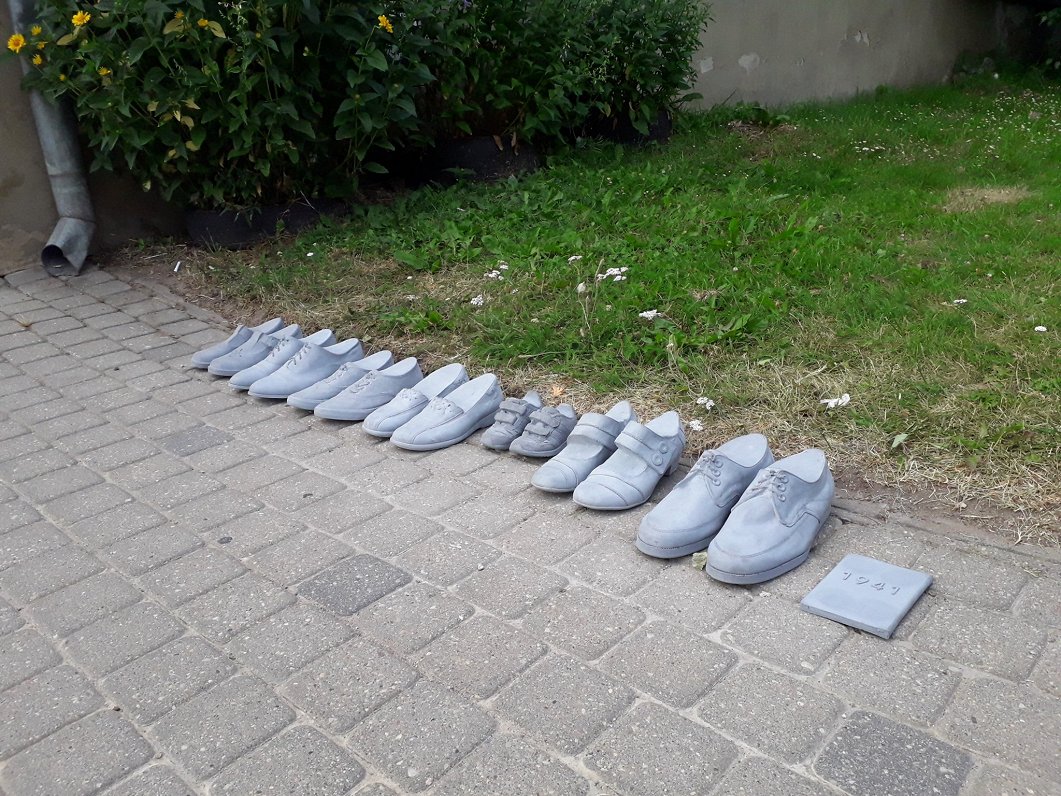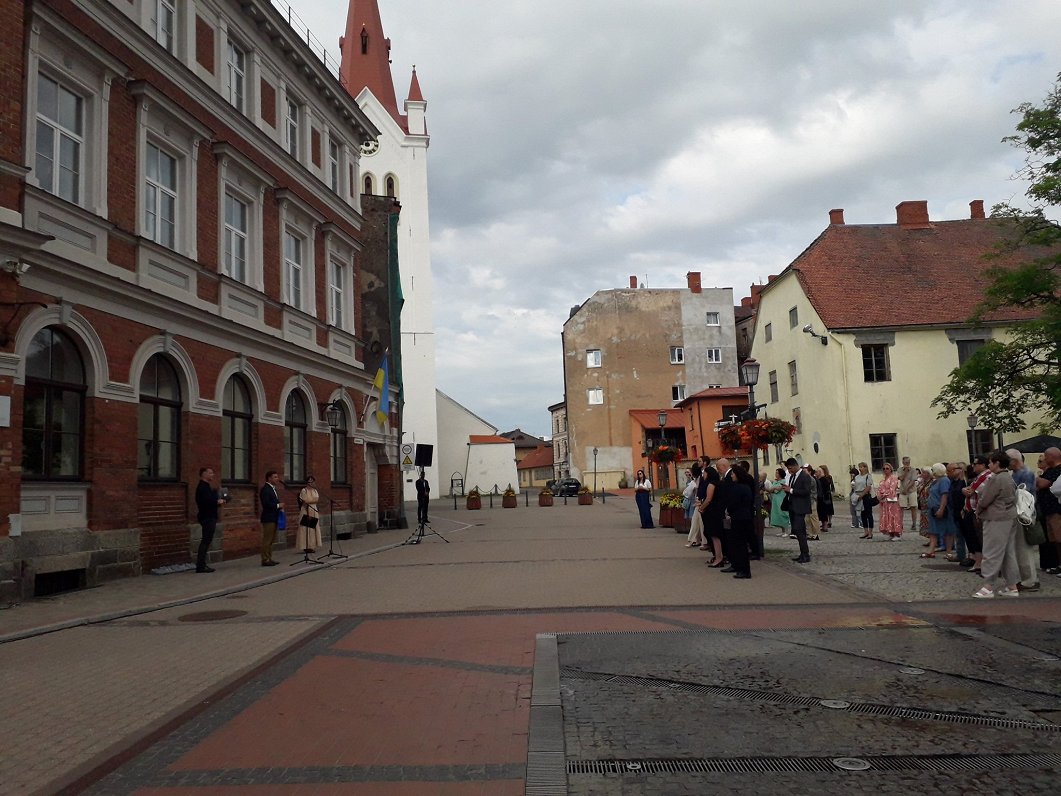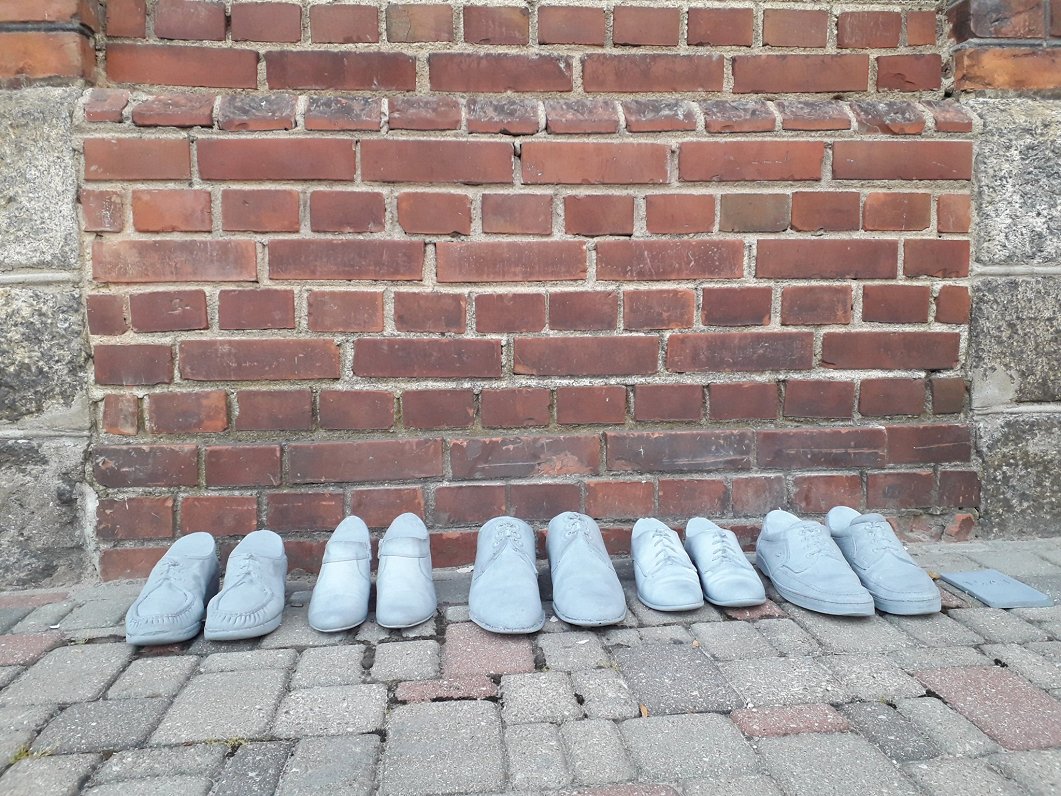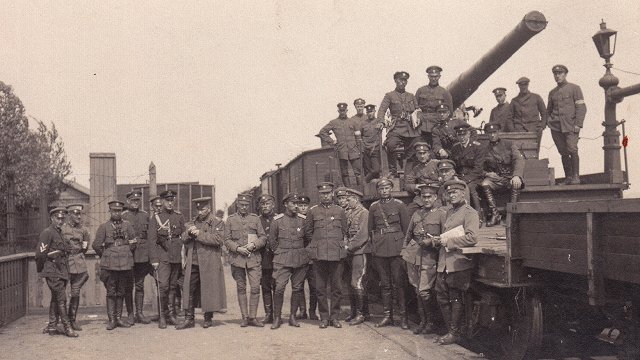At various locations around the city, on the sidewalk outside buildings that were owned or occupied by Cēsis' members of the Jewish population, pairs of concrete shoes have been installed. They come in groups, and the sizes and types of footwear are instantly suggestive of family groups. There are 72 individual sculptures and the prototype of each is a pair of shoes donated by someone living in Cēsis today.

The collective title of the project is "one nine four one path", and the sculptures themselves are the work of Krista and Reinis Dzudzilo, with technical execution by Sandis Aispurs.
LSM spoke with Elīna Kalnina, the curator of the project, who is also the curator of the acclaimed 'Burning Conscience' exhibition which charts Cēsis' experience of occupation.
"1941 brought destruction to the Cēsis Jewish community," explains a map produced as part of the project, which allows visitors to visit all the locations of artworks in the city. "The first group of Cēsis Jews were forced to leave their homes during the Soviet occupation when, on 14 June 1941, they were falsely accused of treason and deported to Siberia along with other townsmen. In the middle of summer 1941 the Nazi occupying forces took over from the Soviets in Latvia.
"In early August, the Jews living in Cēsis and its surroundings were arrested and, on August 10, they were murdered in the forest beside Lake Ninieris and buried right there in a pit. Almost the entire Cēsis Jewish community perished in the Holocaust."
The stated aim of the urban artwork is "to restore [the Jewish] presence in history and today's reality in Cēsis by giving space for memories of them to return to their homes."
That theme was taken up by Cēsis mayor Jānis Rozenbergs at the opening event.

"Many families were killed, many families were harmed... I think this is a very interesting and thought-provoking exhibition, both in summer and winter, day and night," he told around 100 people gathered for the occasion. "We can all think, and consider how these families lived, and who they were." He offered thanks to the Cēsis residents of today who had given permission for the artworks to be placed outside their homes.
Also in attendance was Israel's Ambassador to Latvia, Sharon Rappaport Palgi, who praised the initiaitive which she said was in a sense bringing Cēsis' forgotten Jews "back to life, giving them an identity" after decades of anonymity.
"You're not just remembering, you're taking action, and this is deeply appreciated," she said. "It brings back Jewish life to the public space, and for that I am very grateful."
You can discover more about the Burning Conscience exhibition here. Below you can watch an LTV report on the project.


























